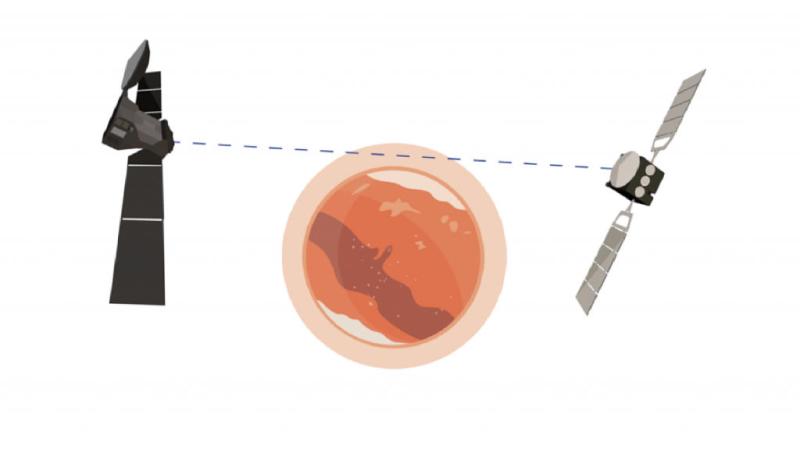
Mission extensions for interplanetary robot explorers are usually continuations of their primary mission. But sometimes the hardware already on board are put to novel uses. European Space Agency has started using radio equipment on board two Mars orbiters to probe the Martian atmosphere.
The scientific basis is straightforward: radio signals are affected by whatever they had traveled through. When transmitting data, such effects are noises to be minimized. But we can also leverage it for atmospheric science here on Earth. ESA applied the same concept at Mars: by transmitting a known signal from one Mars orbiter to another, changes in the received signal tells scientists something about the Martian atmosphere between them.
So the theory sounds good, but the engineering implementation took some work. Most radio equipment on board ESA’s orbiters were not designed to talk to each other. In fact they were deliberately different to minimize interference. However, both Mars Express and Trace Gas Orbiter were designed to act as data relays for surface probes, and not just the one they each carried to Mars. Thus their related radio gear were flexible enough to be adapted to this experiment.
These two machines launched over a decade apart. Yet they could now communicate with each other in Mars orbit using radios originally designed for talking to the surface. In the near future such chatter will probably be limited, as Trace Gas Orbiter is still in the middle of its primary mission. But this success lets ESA think about how much further to push the idea in the future. In the meantime Mars Express will continue its observation of Mars, doing things like giving us context on Perseverance rover landing.
0 Commentaires